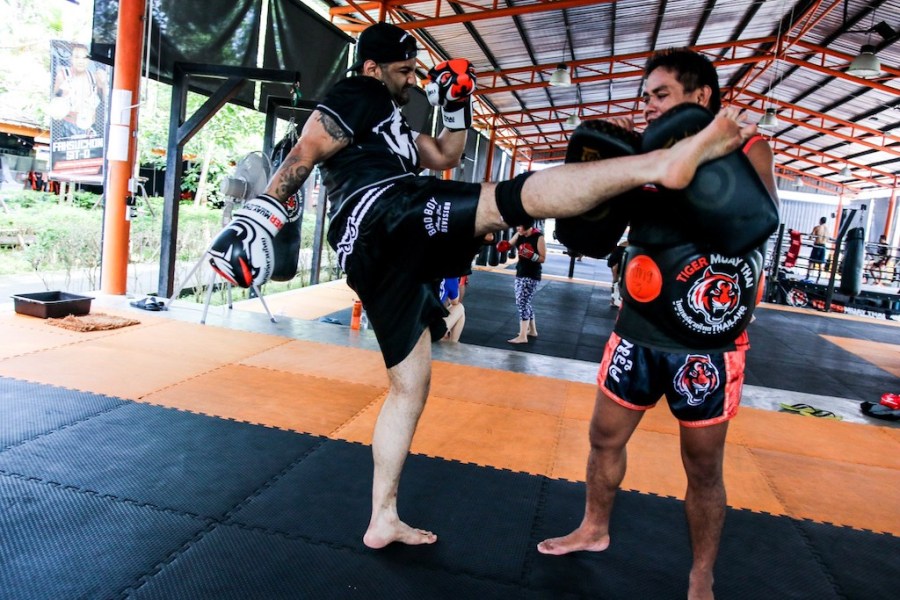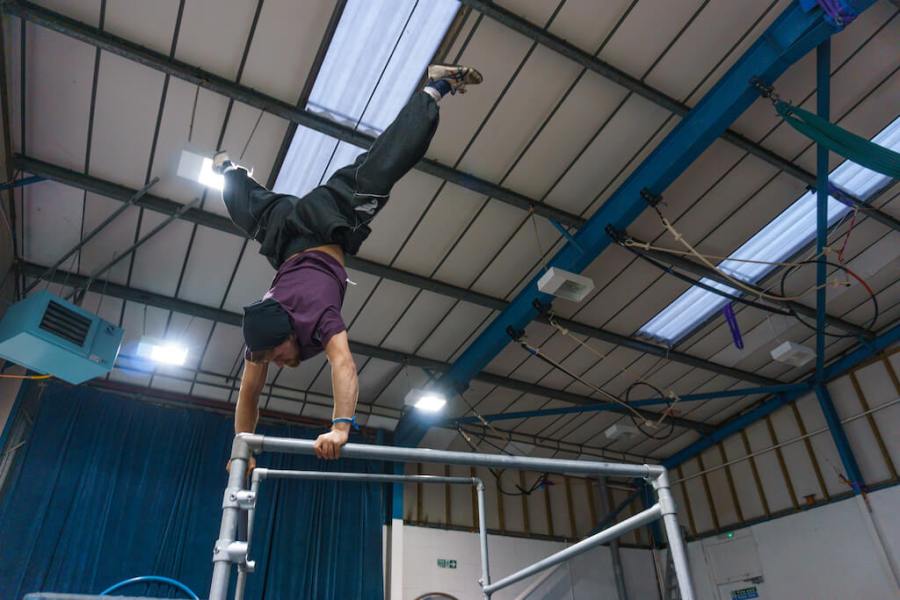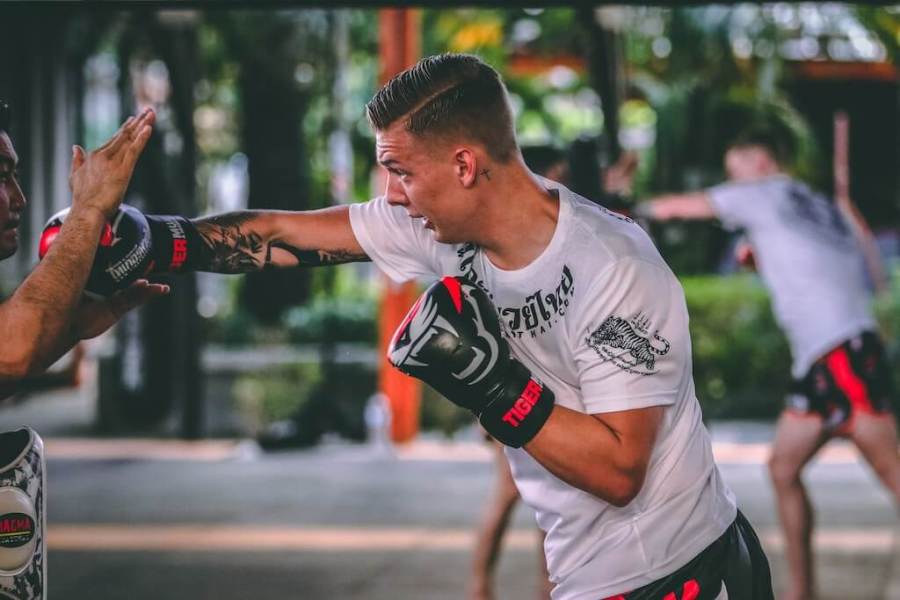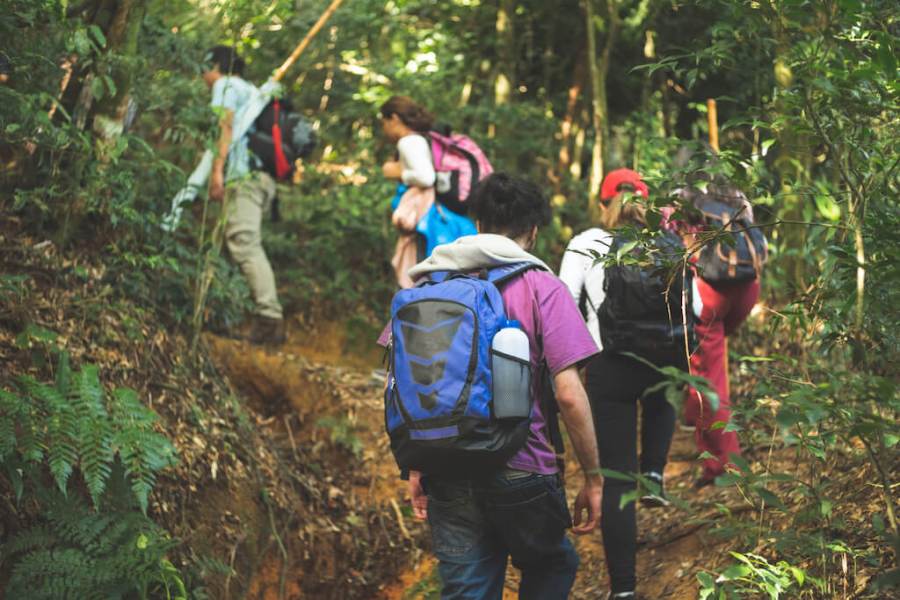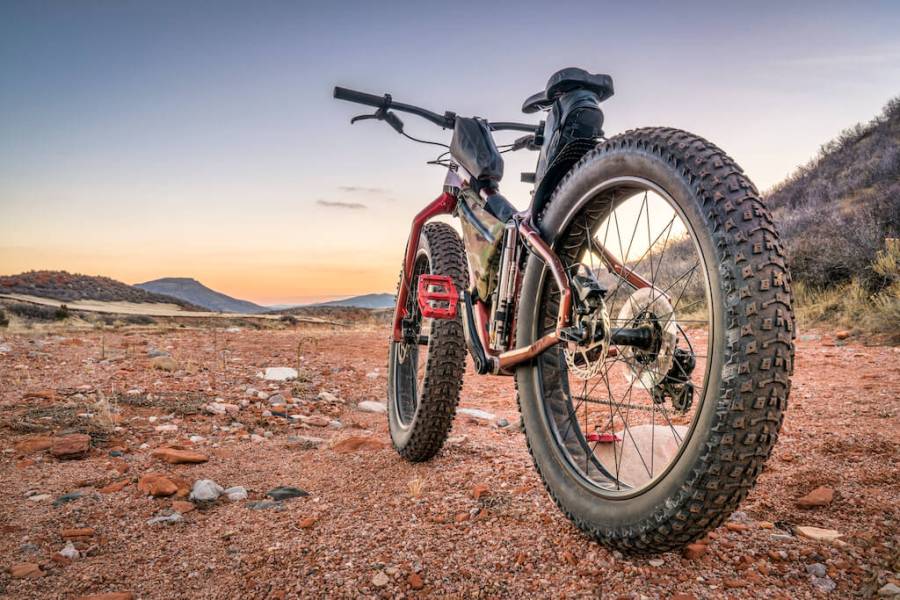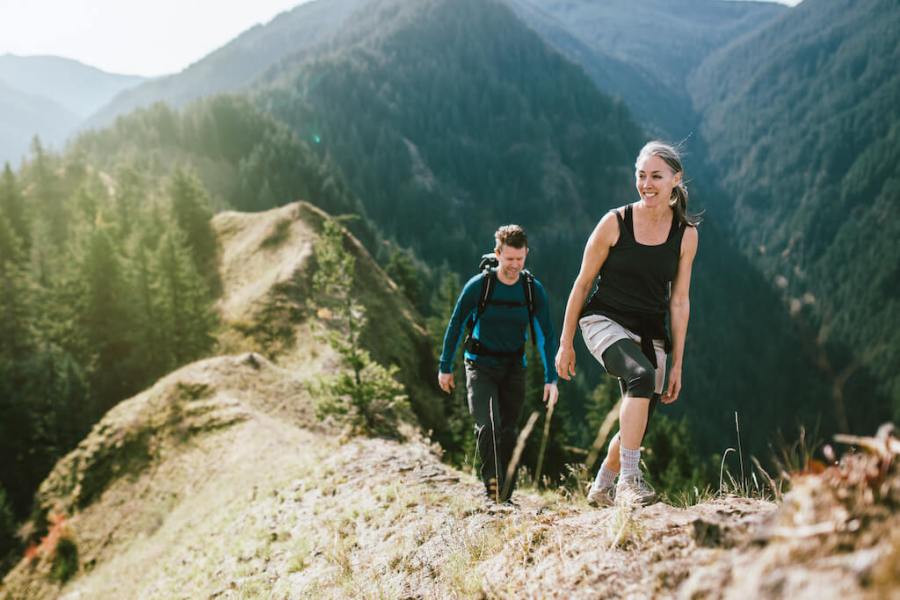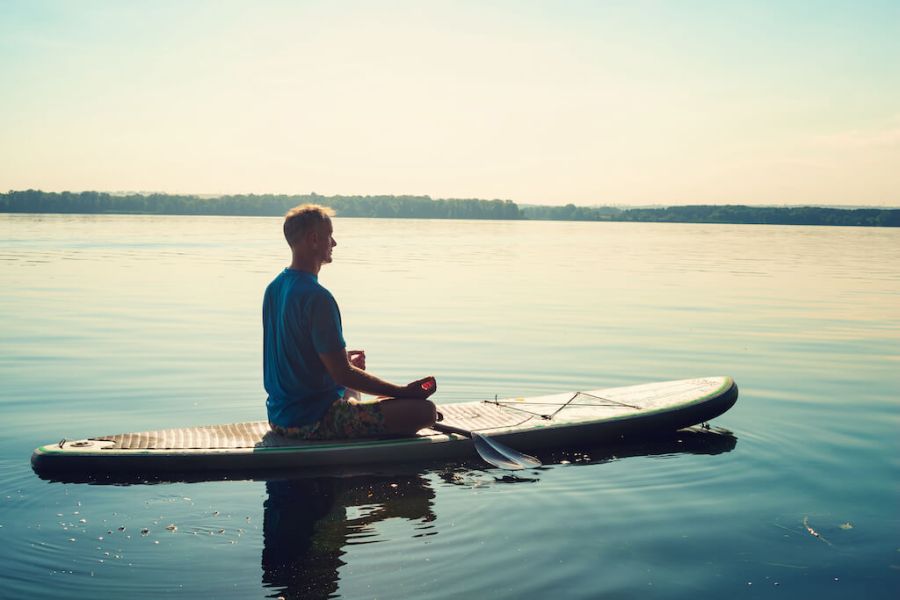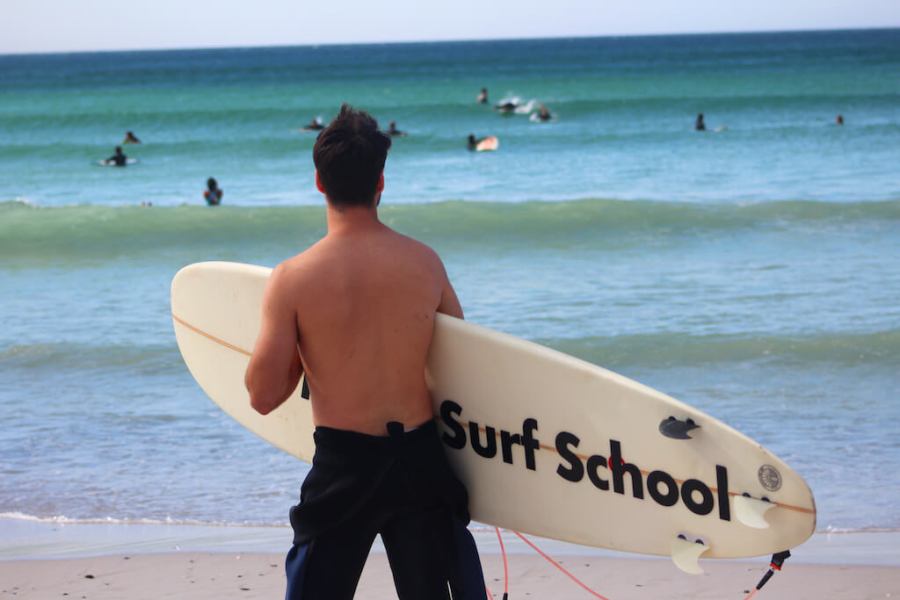From Moroccan trail running to Scottish parkour, staying in shape on your travels has never felt so good. Here’s how to get fit on holiday.
Holidays divide people into two camps.
The first see getting away as a chance to do nothing other than eat, drink, sleep and gain a good few kilograms in the process.
The second enjoy a more active approach, sightseeing and taking in some of the culture of the country in question.
There are obvious merits to both. But if you’ve had your fill of pool-side pina coladas and fancy a slightly more energetic excursion, you can do better than another walking tour. Here’s how to get fit on holiday, no matter where your travels take you…
Related: 3 Cycling Holidays For The Adventure Of A Lifetime
How to Get Fit on Holiday: 9 Unique Activities To Try
BEST FOR AGILITY
Parkour
Location: Edinburgh (Scotland)
Difficulty: Hard
Price: £9 for a 90-minute session
Liven up your urban commute by learning to jump, swing and vault through the world around you. It’s like being a kid again, climbing over things, bounding from one surface to another and generally having fun moving around.
Access’ classes aren’t conventional workouts. You’ll need some strength and power, but you start small, with low risk, and can do it indoors or out. Beware sore legs after your first landing session.
“You see practitioners trying to jump from one edge to another or clamber along the side of a fence, jump over or onto something,” says John Hall, managing director at Access Parkour.
“You can do parkour moving very slowly with small jumps and simple skills, but high-level athletes can still be challenged. It starts with the physical skills: how to land safely, vault over a bar, balance; then you’re challenged to use those skills. It’s something that starts off as fun and you end up fit.”
Software engineer Tom Salu, 28, lives in Edinburgh and has done parkour on his travels.
“It can look intimidating if you’ve seen it on YouTube,” he says, “but you work on your own goals. When you do it outdoors, it’s a great way to explore and as a tourist it takes you off the beaten track. There is an element of risk, but you can also stay well within your comfort zone.”
BEST FOR RESILIENCE
Muay Thai Boxing
Location: Phuket (Thailand)
Difficulty: Hard
Price: £12.45 for a two-hour class
Cardio, strength, coordination and flexibility are among the benefits from a concentrated series of Muay Thai classes.
Tiger do one-off sessions as well as longer camps. It’s an explosive martial art, and beginners will learn stance, footwork, punches, kicks, knee and elbow moves in what doubles as an all-body workout.
Drills on the bags and pads certainly raise the heart rate and torch through calories, but you’ll probably need a couple of weeks’ work to feel confident in the sport.
“Muay Thai benefits all aspects of fitness,” said Jonny Betts, a professional fighter and coach at Tiger.
“You’ll learn self-defence skills, and increase your balance and coordination. Training at the high levels is extremely tough and physically demanding, with lots of sparring and body conditioning, but beginners get introduced with training focusing on building basic technique and increasing their fitness gradually.”
Liam Hamilton runs his own Muay Thai boxing gym in Reading and has been going out to Tiger for four years.
“It’s a safe, clean, beautiful environment,” he says. “I’ve been in the sport for 30 years, but you forget more than you learn and I go to keep my skills up and get fit.”
BEST FOR COORDINATION
Flying Trapeze
Location: New York, Chicago and LA (USA)
Difficulty: Moderate
Price: $60-$95 for a two-hour introductory class
Adrenaline and endorphins will be flying when complete beginners learn a knee-hang trick that ends with a back flip into the safety net in their first session.
There’s literally some groundwork first, of course, with safety and take-off technique, but then legs get a workout, climbing a 30ft ladder time and again to practise from the platform.
Upper body and coordination is tested next in executing the trick, all the while connected to safety lines. By the end you’ll be aiming to fly directly into a catching instructor’s arms.
“It’s a full-body workout,” said Anya Gibian, instructor and office coordinator at Trapeze School New York.
“You work every single muscle through the short swings and tricks you’re doing. It’s a cross between a listening exercise and intense gymnastics. Everyone’s adrenaline spikes, because they’re jumping off a 23ft platform.
“You use body strength to increase height in the swing, and your core, shoulders, lats, back and arms pull on the bar. A lot of people get sore around their obliques the next day if they’re not used to using them too much in everyday life. It’s a lot of fun, so you don’t really realise you’re getting a workout in.”
BEST FOR ECO THERAPY
Jungle Trekking
Location: Rio de Janeiro (Brazil)
Difficulty: Moderate
Price: £49 for a five-hour trek
The jungles around the Brazilian capital combine fitness maintenance and off-the-beaten-track tourism. A full day out will see you sweating your way through the Tijuca Forest National Park on ‘hidden’ trails, climbing 651m in four or five hours.
“You need some fitness – it wouldn’t be nice for someone completely sedentary – but it’s not an extreme thing,” says guide Thiago Mourão.
“It’s a day out in nature; you leave the city and burn the extra calories you got from the typical local food. When people come to Rio they think Christ the Redeemer, Sugar Loaf, Copacabana beach, partying, samba – not hiking, but the hiking is really high quality.”
BEST FOR LEG STRENGTH
Sand Fat Biking
Location: Iquique (Chile)
Difficulty: Moderate
Price: £78 for a full day
Riding across the golden dunes that sit around the foothills of the Andes and the Atacama desert probably conjures romantic images, but sand fat biking will give you a solid workout.
Four-inch wide tyres will give you stability, but if you choose a full day you’ll be out for seven hours and cover 9.9 miles. You’ll need to be capable of a moderate, one-hour mountain bike ride to get the most out of this as your aerobic capacity, balance, legs and glutes will all be challenged.
“It can feel quite strange at first,” says guide and instructor Billy Morales.
“People say the first 200m are the hardest, but then it’s pure fun. It’s a remarkable setting and most of the route is on soft downhill or flat sand. It’s a unique experience and you’ll take lots of pictures and videos away with you.”
BEST FOR ENDURANCE
Mountain Trail Running
Location: Marrakech (Morocco)
Difficulty: Hard
Price: £70 for a 15km guided run
Blue skies, amazing scenery and a few lung-busting ascents. Running up on the trails in the Atlas Mountains is probably not for someone on a couch-to-5k programme. It doesn’t have to be ridiculously hard, but if you’ve only done pavement pounding, your quads might feel the burn.
You’ll be taken along rocky donkey tracks or village footpaths with a mountain guide, get used to running at a higher altitude (up to around 2,100m), and work on your climbing and descending skills. Best in the spring and autumn when the intense summer heat has faded.
“You have stunning mountains and the villages, and the exotic, hospitable culture of the Berber people,” says guide Marc Gallagher.
“Most customers go for the medium-level runs, because unless you’re really trained for it, you’re not going to be ready for the really steep stuff at 4,000m on holiday. But it’s not just a hard run, it’s a running experience. All the worries are taken out of it and you get to learn about the culture, geology, flora and fauna, too.”
James Simcox, a 60-year-old from Teddington, went with Gallagher while preparing for the Richmond Marathon.
“I hadn’t really got into the hills before and it was a beautiful setting,” he says. “We saw practically nobody – a guy with his goats and that was about it. The trails we went on were challenging but not really steep. I had a bit of a knee injury and you just have to be really honest about where you are in your training, so the run can be tailored to your ability.”
BEST FOR FAT LOSS
Fitpacking
Location: Various locations across USA
Difficulty: Easy
Price: From £567 for a three-day trip
Fitpacking is a functional way of keeping in shape on the trails. You carry all your own gear and food, and walk ten miles or so each day with a weight (pack) on your back.
You get the company of multiple expert guides, who cook lightweight, healthy meals, and the chance to take in some awe-inspiring scenery.
“Your nervous system benefits from being out in nature, and there’s a strong sense of community,” says Dan Shafto, a guide and administrator for fitpacking.com.
“We function as a group and whatever happens to the group, happens to everybody. There’s alone time, too, and lots of friendships are made.”
BEST FOR BALANCE
SUP Yoga
Location: Puerto del Carmen (Spain)
Difficulty: Hard
Price: €30 for a one-hour group lesson
You might be used to the downward dog on dry land, but getting out on the water brings another level of difficulty.
Your balance and core stability will be tested greatly and so will your mind-body connection, as you try to move into the poses without falling in. Being able to relax and focus are key, and previous yoga experience would be a benefit.
“It seems more difficult than it really is,” said SUP Yoga instructor Barbara Antonini.
“Sometimes customers have doubts, but anyone with average mobility can do it. We work from the feet to the head and discover a new strength and balance we didn’t know we had. It’s good for the back, legs, abs and arms and, above all, to get rid of stress.”
BEST FOR CORE STRENGTH
Surfing
Location: Cape Town (South Africa)
Difficulty: Moderate
Price: £16 for a 90-minute lesson
Surfing will give you a great workout whether you’re a complete beginner or a big kahuna.
Those new to the sport will spend a lot of time paddling back out to find the waves, while the more advanced will also work their core hard as they ride the swells. Your shoulders, upper back, biceps and triceps will work hard as you paddle around.
“It’s like a mix of swimming with weights and rowing,” said Jamie Nye, the owner of African Soul Surfer.
“It’s definitely very good for core strength, too, and it can challenge coordination and timing. Where we are located, we’ve got some quite mellow waves without any strong current, angry locals or anything like that, so it’s good for beginners and intermediates.”
Words: Leo Spall

